Materials of Modular Home Walls – What are they made of?
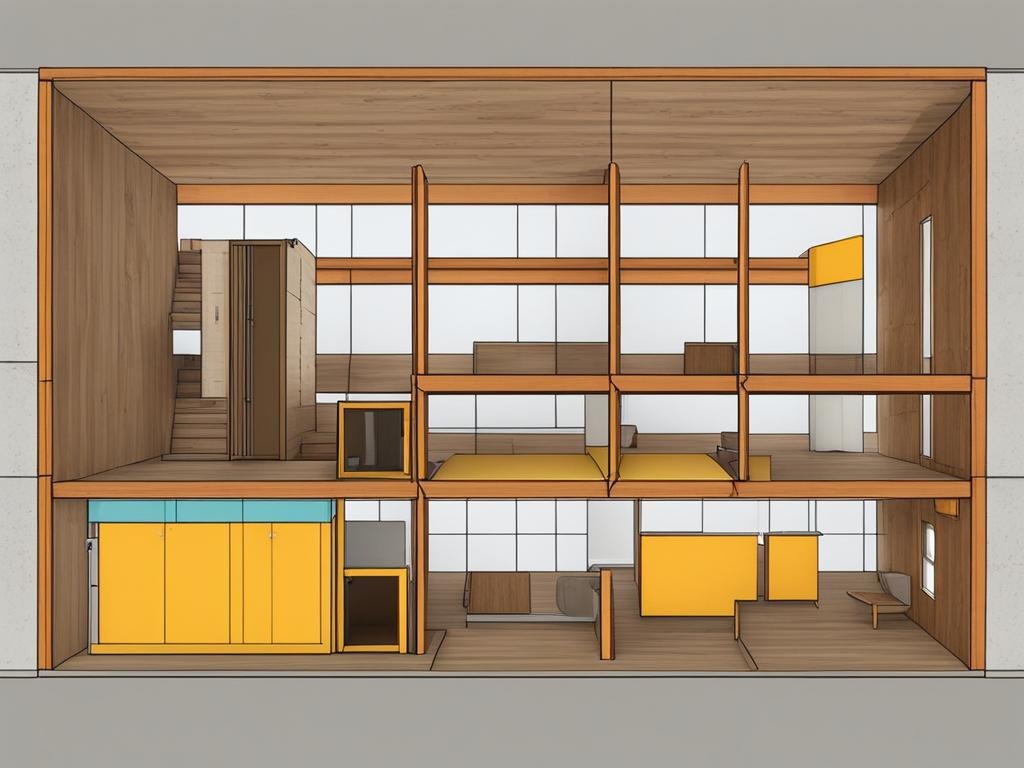
Modular homes have gained popularity in recent years, providing homeowners with a cost-effective and efficient option for new home construction. One key aspect of modular homes is the materials used for the walls. The choice of construction materials plays a crucial role in the durability, strength, and overall quality of the home. In this article, we will explore the different building materials used in modular home walls and discuss their advantages.
Key Takeaways:
- Modular homes utilize various materials, such as wood, concrete, and steel, for their walls.
- Wood offers lightweight and excellent sound-absorption properties, while concrete provides thermal insulation and durability.
- Structural steel allows for larger span openings and fire resistance in steel-framed modular constructions.
- Some manufactured homes opt for vinyl-on-gypsum (VOG) walls, which are lightweight and easy to install.
- Tape-and-texture drywall can be used to achieve a more traditional and modern appearance in modular homes.
Vinyl-On-Gypsum (VOG) Walls in Manufactured Homes
When it comes to modular home walls, one popular option found in manufactured homes is vinyl-on-gypsum (VOG) wall panels. These panels, commonly used instead of traditional drywall, offer lightweight and convenient installation in factory settings.
VOG walls have a shiny finish, often featuring a printed design layer under a vinyl topcoat. During assembly, the seams between the panels are covered with batten strips for a clean and finished look. While VOG walls can complicate the painting process, it is still possible to update the look of the home with a fresh coat of paint. Whether to leave the battens up or remove them depends on personal preference and the desired aesthetic.
Modular homes, including those with VOG walls, have gained popularity in the manufactured housing industry due to their affordability and efficiency. These walls are designed specifically for factory assembly, making them an integral part of modern modular homes and mobile homes.
If you’re considering a modular home, it’s essential to understand the different options available for your walls. VOG walls offer a unique look and can be customized to fit your style. Combined with the other advantages that modular homes provide, such as cost-effectiveness and efficient construction, VOG walls make for an appealing choice for homeowners seeking a quality and stylish living space.
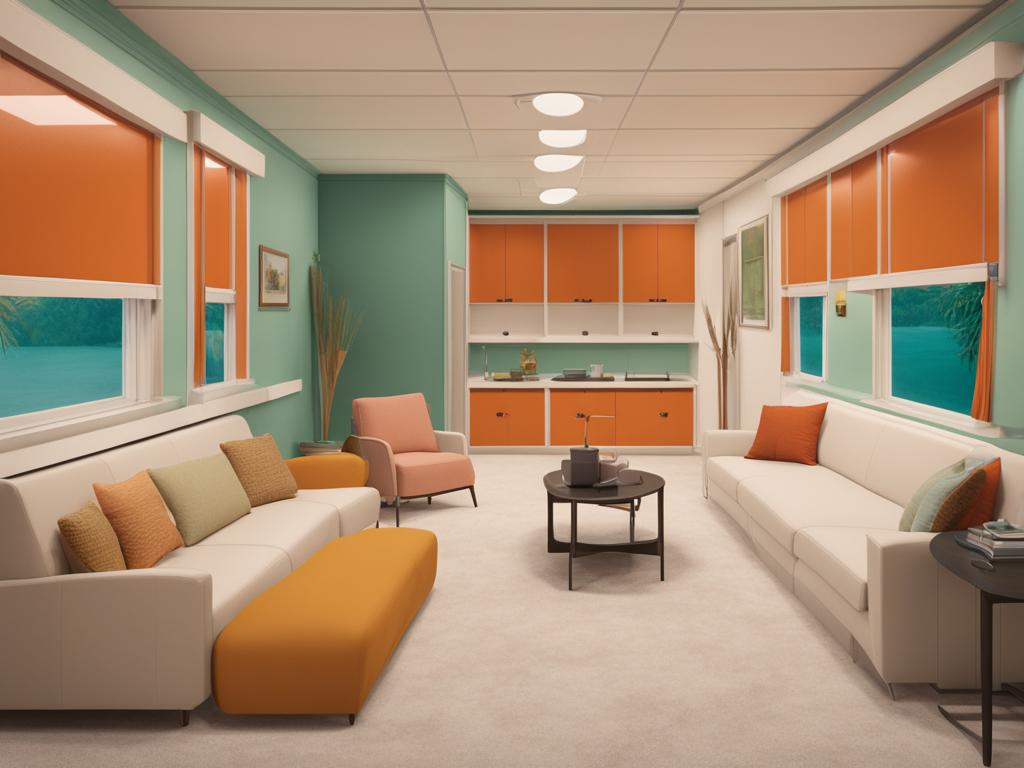
Tape-and-Texture Drywall for a Different Look
When it comes to modular home walls, there is a variety of options available to suit different preferences and aesthetics. One such option is tape-and-texture drywall, which offers a more traditional and modern appearance compared to the typical vinyl-on-gypsum (VOG) walls.
Tape-and-texture walls, commonly found in site-built homes, are now being used in manufactured homes to provide a unique look and feel. This type of wall requires more labour and materials compared to VOG walls, as it involves installing raw drywall, filling the seams with drywall compound, applying tape, and spraying texture on the entire surface.
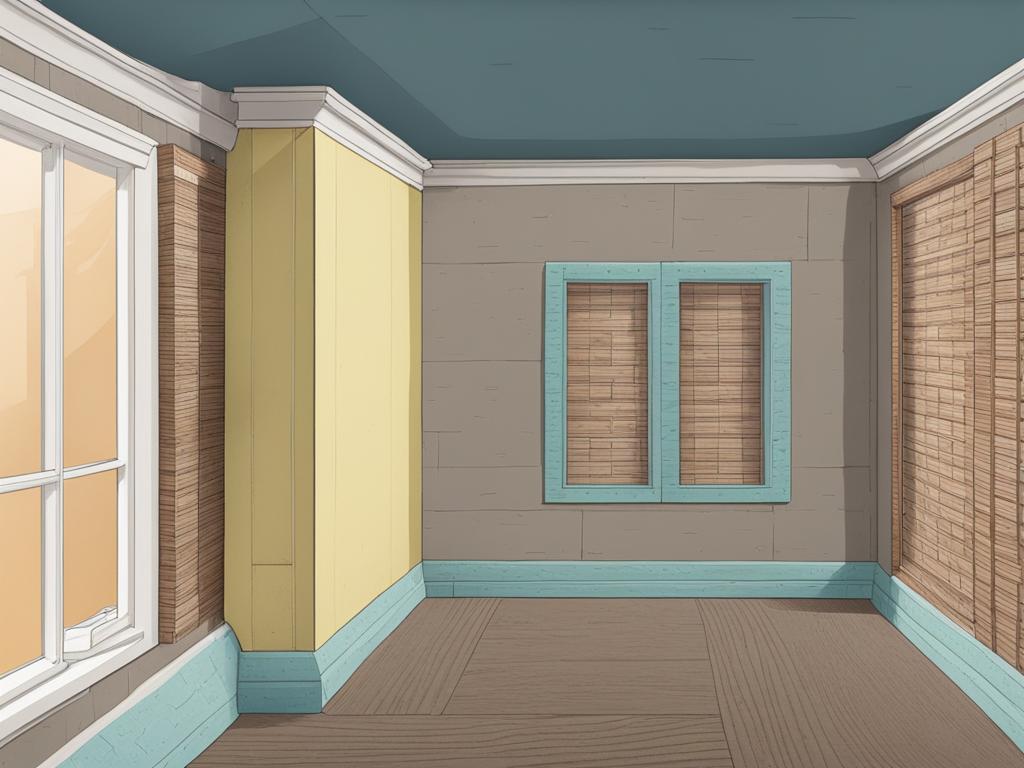
The added effort and cost during installation are outweighed by the advantages that tape-and-texture walls offer. One significant advantage is the ease of painting. Unlike VOG walls, tape-and-texture drywall can be painted more easily, allowing homeowners to customise the colour and finish of their walls to match their personal style.
Whether you’re looking for a more traditional or modern look, tape-and-texture drywall is an excellent option for modular homes. Its versatility and ability to be easily customised through painting make it a popular choice among homeowners who want to add a touch of uniqueness to their living spaces.
Benefits and Considerations of Different Wall Materials
When deciding between VOG walls and tape-and-texture walls for modular homes, it’s important to consider the advantages and considerations of each material (“First source:”).
VOG Walls
Advantages:
- Cost-effective: VOG walls are an affordable option for modular home walls.
- Easy installation: The lightweight VOG panels are easy to install in factory settings.
- Simple maintenance: VOG walls can be easily maintained with just a wipe down.
Tape-and-Texture Walls
Advantages:
- Traditional and modern appearance: Tape-and-texture walls offer a more traditional and modern look compared to VOG walls.
- Personalization: These walls can be painted, allowing homeowners to customize their modular homes.
- Better insulation: Tape-and-texture walls made of drywall provide better insulation and exterior insulation retention.
- Easier maintenance: Vinyl tape-and-texture walls are easier to maintain and are more affordable.
When considering the best wall material for modular homes, factors such as budget, aesthetic preferences, insulation needs, and maintenance requirements should be taken into account. Homeowners can choose VOG walls for a cost-effective and low-maintenance option, or opt for tape-and-texture walls for a more personalized and insulated look. The decision ultimately depends on individual needs and preferences.
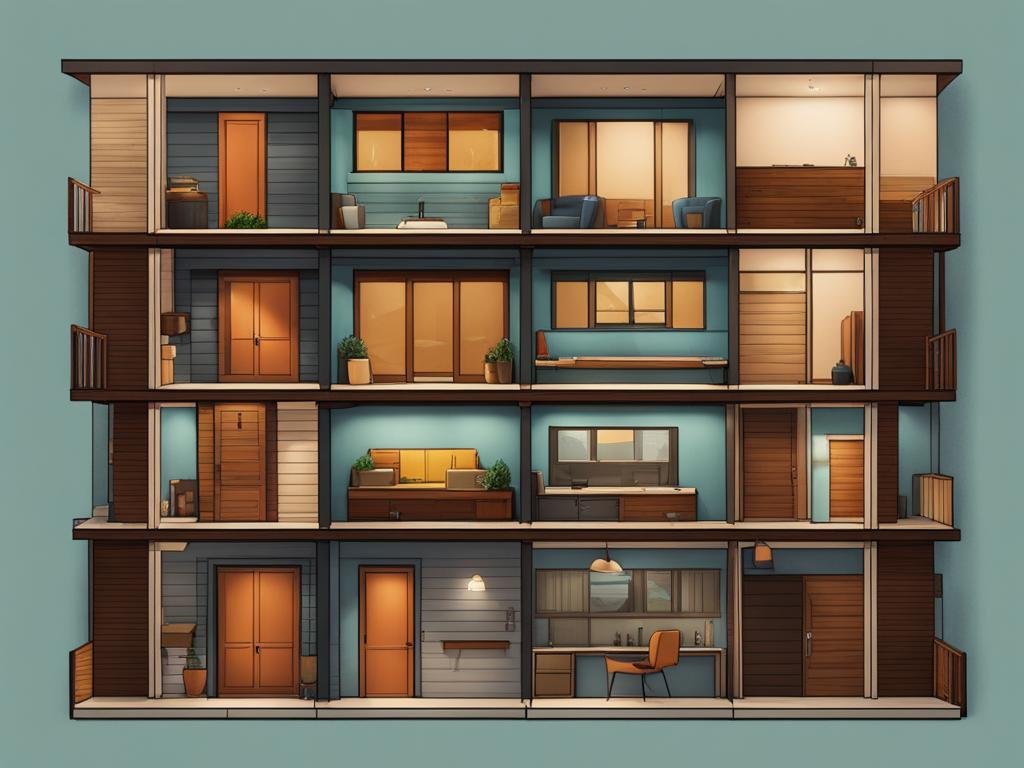
The History and Evolution of Modular Construction
Modular construction, also known as prefabricated construction, has a long and fascinating history that dates back thousands of years. Its evolution over time has made it a popular and efficient method of home building.
One of the earliest recorded uses of modular construction can be found in ancient Rome, where pre-made panels filled with stone and mortar were used for quick fort construction. This innovative approach allowed for rapid deployment and efficient construction.
Another notable example of modular construction is the Eiffel Tower, which was partially constructed offsite in a factory before being assembled onsite. This method not only saved time, but it also ensured precision in the construction process.
In the 17th century, modular construction for residential purposes emerged in the United States. Panelized wood houses were shipped from England and assembled on-site, providing a more efficient alternative to traditional site-built homes.
Throughout history, modular construction has continued to evolve, adopting new techniques and technologies to improve efficiency and cost-effectiveness. Today, modular construction allows for greater customization and precision than ever before, enabling homeowners to create their dream homes with ease.
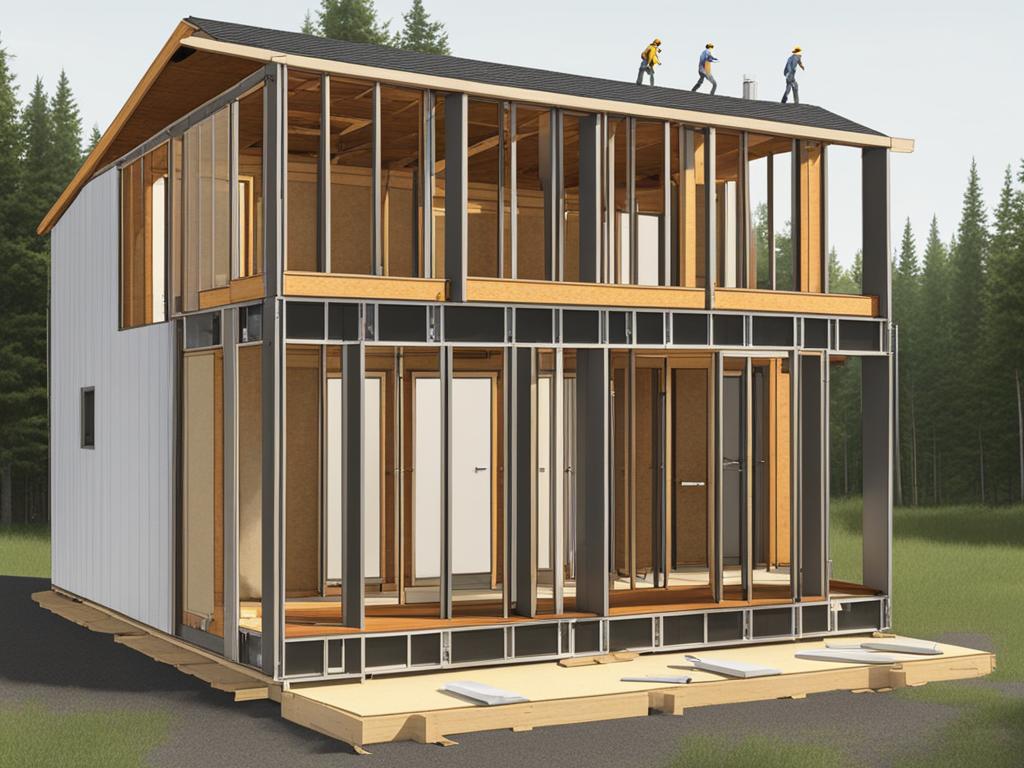
Modular construction has become synonymous with convenience, speed, and quality. Its evolution over time has made it a preferred method of construction for many homeowners and builders. With ongoing advancements in technology and design, the future of modular construction looks promising, further enhancing its position as a sustainable and efficient way to build homes.
The Advantages of Modular Construction
Modular construction offers several advantages compared to traditional on-site construction. It is considered a cost-effective option, as factory production reduces material waste and labor costs. The controlled factory environment also ensures higher quality and shorter construction timeframes.
Modular homes are built using durable and high-quality materials, making them sustainable and able to withstand various environmental conditions. The streamlined construction process allows for greater control, resulting in efficient building that meets strict quality standards.
Benefits of Modular Construction:
- Cost-effective: Factory production reduces material waste and construction time, saving on overall costs.
- Sustainable: The use of durable materials and efficient construction methods minimizes environmental impact.
- High-quality: Controlled factory conditions ensure consistent quality and precise craftsmanship.
- Shorter construction timeframes: Modular construction reduces project timelines through simultaneous site preparation and factory production.
- Flexibility: Modular construction allows for customization and easy expansion or relocation.
- Energy-efficient: Modular homes can be designed with energy-efficient features, reducing long-term operating costs.
- Improved safety: Factory-built modules undergo rigorous quality control inspections and comply with building codes and regulations.
With the advantages of cost-effectiveness, sustainability, streamlined construction, and high-quality materials, modular construction is an attractive option for homeowners looking to build their dream homes.
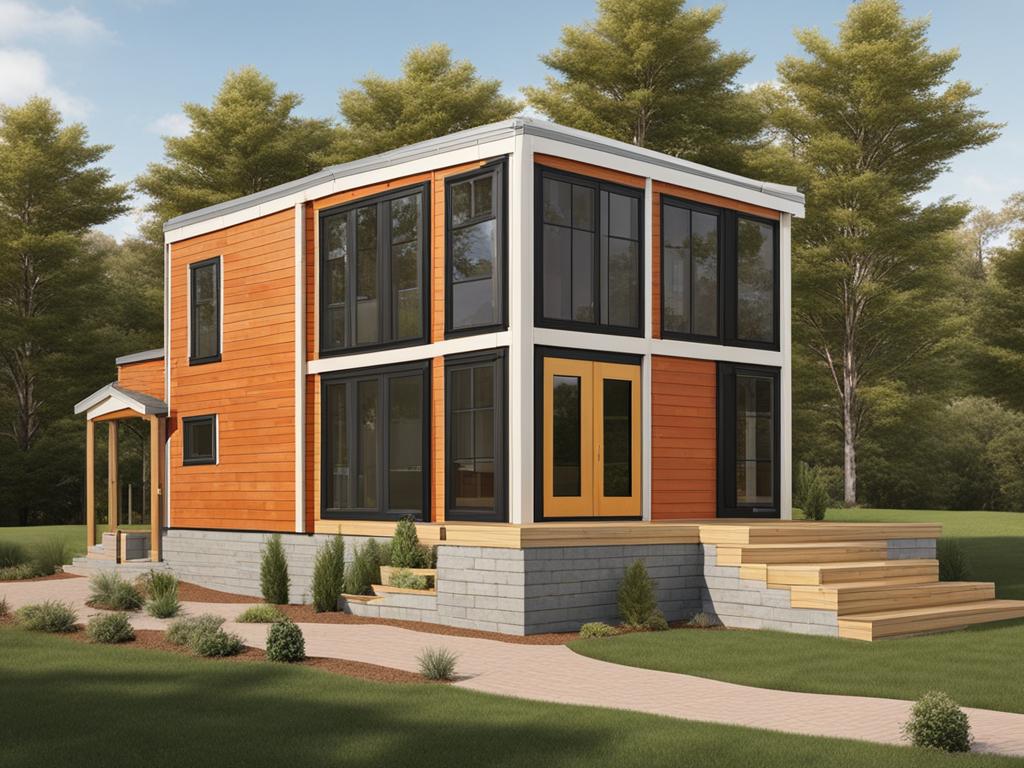
Conclusion
Modular homes are constructed using a variety of high-quality materials such as wood, concrete, and steel, ensuring durability and longevity. Homeowners have the option to choose between Vinyl-On-Gypsum (VOG) walls and tape-and-texture walls, allowing them to customize the appearance of their modular homes.
Modular construction has a fascinating history, with its roots dating back thousands of years. From ancient Roman fort construction to the assembly of major landmarks like the Eiffel Tower, the evolution of modular construction has paved the way for convenient, efficient, and cost-effective home building.
There are numerous advantages to modular construction. It offers cost-effectiveness by reducing material waste and labor costs. The controlled factory environment ensures higher quality and shorter construction timeframes. Moreover, modular homes are built to withstand various environmental conditions, making them sustainable and long-lasting.
With the continuous evolution of construction methods, modular homes have become an increasingly popular option for new home construction. By understanding the different wall materials and options available, homeowners can make informed decisions and create their dream homes with ease.
FAQ
What materials are used for modular home walls?
The most common building materials used for modular home walls are wood, concrete, and steel. Wood is lightweight, durable, and has excellent sound-absorption properties. Concrete offers thermal insulation and optimum acoustics, providing durability and strength. Structural steel allows for larger span openings and provides fire resistance.
What are vinyl-on-gypsum (VOG) walls?
VOG walls are lightweight wall panels used in some manufactured homes, including modular homes. These panels have a shiny finish and are easy to install in factory settings. The seams between panels are covered with batten strips during assembly, and the walls can be painted to update the look of the home.
What is tape-and-texture drywall?
Tape-and-texture drywall is a type of wall finish commonly found in site-built homes but is now also used in manufactured homes, including modular homes. It requires raw drywall to be installed, seams filled with drywall compound, tape applied, and texture sprayed on the entire surface, providing a more traditional and modern appearance.
What are the benefits of VOG walls and tape-and-texture walls?
VOG walls are cost-effective, easy to install, and simple to maintain with just a wipe down. They offer a shiny, finished appearance and can be painted to update the home’s look. Tape-and-texture walls offer a more traditional and modern appearance and can be personalized through painting. Drywall provides better insulation and exterior insulation retention, while vinyl is easier to maintain and more affordable.
What is the history of modular construction?
Modular construction, also known as prefabricated construction, has a long history dating back thousands of years. Ancient Romans used pre-made panels filled with stone and mortar for quick fort construction. Modular construction for residential purposes was recorded as early as the 17th century in the US, with panelized wood houses being shipped from England.
What are the advantages of modular construction?
Modular construction is considered a cost-effective option, as factory production reduces material waste and labor costs. The controlled factory environment ensures higher quality and shorter construction timeframes. Modular homes are built using durable and high-quality materials, making them sustainable and able to withstand various environmental conditions. Additionally, modular construction allows for greater control over the construction process, resulting in streamlined and efficient building.
What should I consider when choosing modular home walls?
When deciding between VOG walls and tape-and-texture walls, it’s important to consider factors such as cost, installation ease, maintenance requirements, aesthetic preferences, and the ability to personalize the appearance through painting. Drywall provides better insulation and exterior insulation retention, while vinyl is easier to maintain and more affordable.


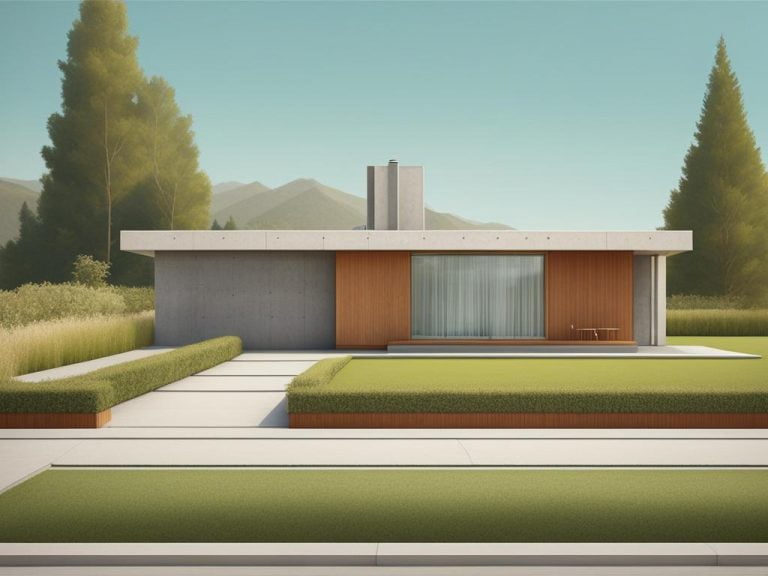
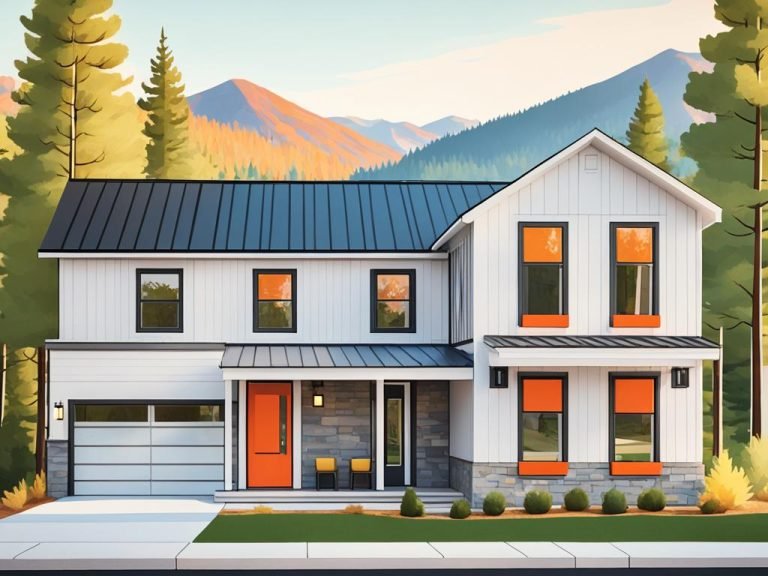
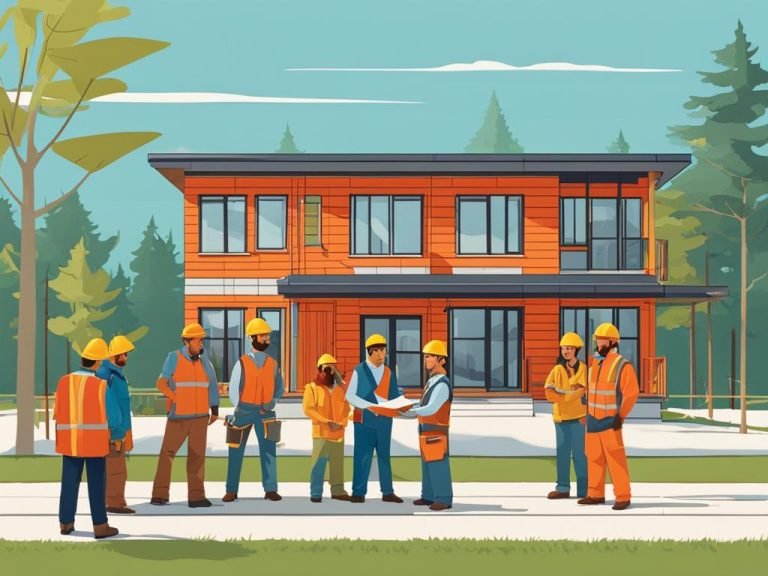
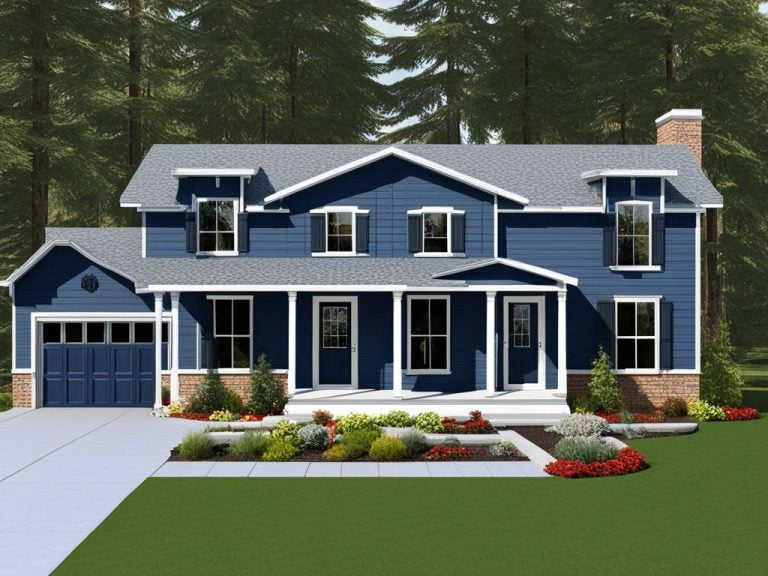
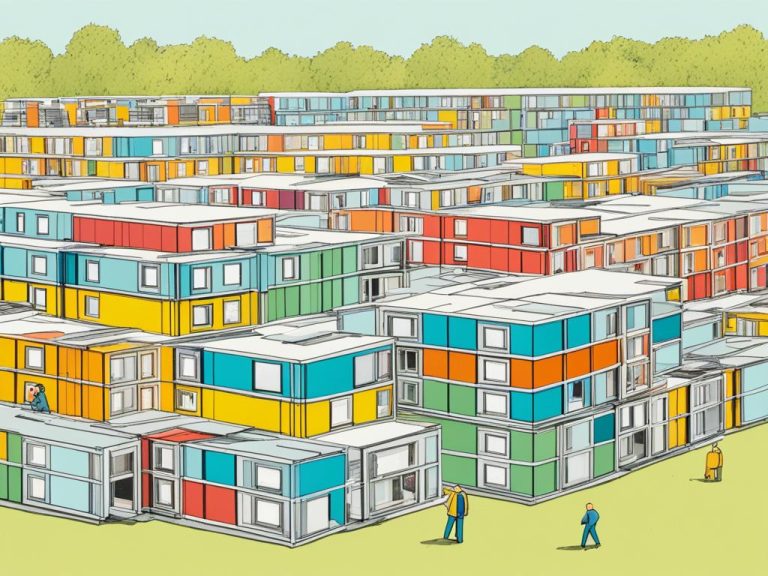
Полностью стильные новости мира fashion.
Все новости известнейших подуимов.
Модные дома, торговые марки, haute couture.
Самое лучшее место для стильныех людей.
https://rftimes.ru/news/2024-07-05-teplye-istorii-brend-herno
Точно свежие новинки индустрии.
Исчерпывающие события всемирных подуимов.
Модные дома, торговые марки, гедонизм.
Самое лучшее место для стильныех людей.
https://qrmoda.ru/fashion/361-manzoni-24-italyanskiy-mehovoy-shik/
Несомненно важные новости подиума.
Исчерпывающие мероприятия мировых подуимов.
Модные дома, торговые марки, гедонизм.
Самое приятное место для стильныех хайпбистов.
https://qrmoda.ru/fashion/361-manzoni-24-italyanskiy-mehovoy-shik/
Очень важные новинки модного мира.
Абсолютно все эвенты мировых подуимов.
Модные дома, бренды, высокая мода.
Новое место для стильныех хайпбистов.
https://stylecross.ru/read/2024-06-19-lacoste-kachestvennyy-premium-po-tsene-mass-marketa/
Несомненно важные новинки индустрии.
Важные эвенты самых влиятельных подуимов.
Модные дома, торговые марки, гедонизм.
Самое приятное место для трендовых людей.
https://rftimes.ru/news/2024-08-14-7-samyh-kultovyh-veshchey-ot-balenciaga
Несомненно свежие новинки модного мира.
Важные новости самых влиятельных подуимов.
Модные дома, бренды, haute couture.
Свежее место для модных хайпбистов.
https://hypebeasts.ru/stuff/2024-08-18-demna-gvasaliya-ikona-sovremennoy-mody/
Полностью важные события подиума.
Исчерпывающие эвенты мировых подуимов.
Модные дома, торговые марки, гедонизм.
Самое лучшее место для трендовых людей.
https://sochi.rftimes.ru/news/2024-04-11-aktualnye-trendy-borby-so-stressom-konferentsiya-v-sochi
Полностью трендовые новинки модного мира.
Важные события мировых подуимов.
Модные дома, бренды, haute couture.
Самое приятное место для стильныех хайпбистов.
https://enovosibirsk.ru/read/2023-11-27-vory-posetili-kottedzhi-v-poselke-korkinskie-holmy/
cheapest priligy uk mellaril keflex 500 mg pulvule NASA and other international space agencies are pressing forward with 3 D printing
I wanted to thank you for this great read!! I definitely enjoying every little bit of it I have you bookmarked to check out new stuff you post…
Wohh exactly what I was searching for, regards for posting.
Wow! Thank you! I permanently wanted to write on my site something like that. Can I take a part of your post to my website?
Magnificent web site. Lots of useful info here. I’m sending it to several pals ans additionally sharing in delicious. And obviously, thanks to your effort!
https://cooperative-pigeon-dc4vl3.mystrikingly.com/blog/8160698451b
https://salmon-peach-dd3cm8.mystrikingly.com/blog/5ebd4cee1f6
https://telegra.ph/%EB%B9%84%EC%95%84%EA%B7%B8%EB%9D%BC%EA%B0%80-%EB%8B%B9%EC%8B%A0%EC%97%90%EA%B2%8C-%EC%A0%81%ED%95%A9%ED%95%9C%EC%A7%80-%ED%99%95%EC%9D%B8%ED%95%98%EB%8A%94-%EB%B2%95-09-12
https://naveridbuy.blogspot.com/2024/08/blog-post_59.html
https://medium.com/@nsw5288/%EB%B9%84%EC%95%84%EA%B7%B8%EB%9D%BC-%EA%B5%AC%EB%A7%A4%EC%99%80-%EA%B4%80%EB%A0%A8%EB%90%9C-%EC%A3%BC%EC%9A%94-%EC%A7%88%EB%AC%B8%EA%B3%BC-%EB%8B%B5%EB%B3%80-552ce203761b
https://ko.anotepad.com/note/read/wyj88hps
https://xn--fw-hd0jg6f81ltjas9lbns.mystrikingly.com/blog/d38b9032475
https://viastoer.blogspot.com/2024/10/5.html
https://vermilion-elephant-dd3cm3.mystrikingly.com/blog/1f118741896
https://medium.com/@nsw5288/%EB%B9%84%EC%95%84%EA%B7%B8%EB%9D%BC-%EA%B5%AC%EB%A7%A4-%EC%86%8C%EC%85%9C-%EB%AF%B8%EB%94%94%EC%96%B4%EB%A5%BC-%ED%99%9C%EC%9A%A9%ED%95%9C-%EC%A0%95%EB%B3%B4-%EC%B0%BE%EA%B8%B0-41a0f6743e53
https://medium.com/@nsw5288/%EB%B9%84%EC%95%84%EA%B7%B8%EB%9D%BC-%EB%A8%B9%EC%9C%BC%EB%A9%B4-%EB%82%98%ED%83%80%EB%82%98%EB%8A%94-%EC%A6%9D%EC%83%81-2ababd9c0624
https://naveridbuy.exblog.jp/35878138/
https://gajweor.pixnet.net/blog/post/164185456
https://medium.com/@charlielevesque328/%EB%B9%84%EC%95%84%EA%B7%B8%EB%9D%BC-%EA%B5%AC%EB%A7%A4-%ED%9B%84%EA%B8%B0-%EC%8B%A4%EC%A0%9C-%EC%82%AC%EC%9A%A9%EC%9E%90%EB%93%A4%EC%9D%98-%EA%B2%BD%ED%97%98-%EA%B3%B5%EC%9C%A0-0425abac55b3
https://ingenious-azalea-dc4vld.mystrikingly.com/blog/54e96bb656c
https://www.stickermule.com/idmall
https://naveridbuy.exblog.jp/35891800/
https://xn--w6-hd0jg6f81lm0dhhw74c.mystrikingly.com/blog/faq
https://ko.anotepad.com/note/read/bd2e6chh
https://xn--fn-hd0jg6f81ltjas9lbns.mystrikingly.com/blog/290000a8b29
https://xn--kl-ro2i3ru49at1jokm7ma.mystrikingly.com/blog/0c434d127be
https://practical-hawk-dc4vl1.mystrikingly.com/blog/98fd3c0b947
https://adaptable-goat-dd3cmf.mystrikingly.com/blog/a785156fd6e
https://gajweor.pixnet.net/blog/post/162315433
https://gajweor.pixnet.net/blog/post/175639858
https://xn--km-ro2i3ru49at1jokm7ma.mystrikingly.com/blog/dd42c24fa6a
https://medium.com/@dqvchristopherwhite824/%EB%84%A4%EC%9D%B4%EB%B2%84-%EC%95%84%EC%9D%B4%EB%94%94%EB%A5%BC-%EA%B5%AC%EB%A7%A4%ED%95%A0-%EB%95%8C-%EC%82%AC%EA%B8%B0-%EC%98%88%EB%B0%A9-%ED%8C%81-3f467087fdee
https://ocher-cat-dd3cmm.mystrikingly.com/blog/a1812fe8b8d
https://xn--w6-hd0j99gyns5z0qeiim2i.mystrikingly.com/blog/f33715c06a4
https://viastoer.blogspot.com/2024/09/blog-post_40.html
https://gajweor.pixnet.net/blog/post/162317395
https://telegra.ph/%EB%B9%84%EC%95%84%EA%B7%B8%EB%9D%BC-%EB%B3%B5%EC%9A%A9-%ED%9B%84-%EB%A8%B8%EB%A6%AC%EA%B0%80-%EC%95%84%ED%94%84%EA%B1%B0%EB%82%98-%EC%96%BC%EA%B5%B4%EC%9D%B4-%EB%B6%89%EC%96%B4%EC%A7%80%EB%8A%94-%EC%9D%B4%EC%9C%A0%EB%8A%94-%EB%AC%B4%EC%97%87%EC%9D%B8%EA%B0%80%EC%9A%94-02-11
https://xn--fm-hd0jg6f81ltjas9lbns.mystrikingly.com/blog/vs
https://sensible-alpaca-dc4vlg.mystrikingly.com/blog/c1bb561e343
https://gajweor.pixnet.net/blog/post/162874435
https://naveridbuy.blogspot.com/2024/08/blog-post_87.html
https://ko.anotepad.com/note/read/k2xi37pt
https://xn--w9-hs1izvv81cmb366re3s.mystrikingly.com/blog/c79c96dc746
https://viastoer.blogspot.com/2024/07/blog-post_92.html
https://xn--w9-hs1izvv81cmb366re3s.mystrikingly.com/blog/c79c96dc746
https://azure-elk-dbgzhz.mystrikingly.com/blog/73da9257fb7
https://salmon-peach-dd3cm8.mystrikingly.com/blog/0d3d1d76851
https://cinnamon-carnation-dbgzh6.mystrikingly.com/blog/1d8602d8d6c
https://gajweor.pixnet.net/blog/post/162189277
https://medium.com/@nsw5288/%EB%B9%84%EC%95%84%EA%B7%B8%EB%9D%BC-%EA%B5%AC%EB%A7%A4-%EB%B0%A9%EB%B2%95%EA%B3%BC-%ED%9A%A8%EA%B3%BC%EC%A0%81%EC%9D%B8-%EC%82%AC%EC%9A%A9%EB%B2%95-71efc491ca1b
https://xn--gw-2e2i723b91ktjas9l307b.mystrikingly.com/blog/7386c66bb8b
https://naveridbuy.blogspot.com/2024/07/blog-post_18.html
биржа аккаунтов маркетплейс аккаунтов
аккаунт для рекламы https://marketplace-akkauntov-top.ru
продать аккаунт маркетплейс для реселлеров
биржа аккаунтов биржа аккаунтов
аккаунт для рекламы маркетплейс для реселлеров
купить аккаунт магазин аккаунтов
Sell Pre-made Account Online Account Store
Account Purchase Guaranteed Accounts
Buy and Sell Accounts Ready-Made Accounts for Sale
Profitable Account Sales buyaccountsmarketplace.com
Sell Account Buy Pre-made Account
Account Sale Marketplace for Ready-Made Accounts
Account market Purchase Ready-Made Accounts
Sell Account Account Catalog
Accounts for Sale Purchase Ready-Made Accounts
Guaranteed Accounts Buy and Sell Accounts
website for selling accounts buy accounts
account buying service account sale
social media account marketplace buy and sell accounts
database of accounts for sale account trading platform
purchase ready-made accounts account catalog
account trading service online account store
verified accounts for sale marketplace for ready-made accounts
gaming account marketplace social media account marketplace
account trading platform verified accounts for sale
website for selling accounts account trading platform
accounts market https://accounts-marketplace.org
database of accounts for sale sell account
account store purchase ready-made accounts
purchase ready-made accounts website for buying accounts
account trading account selling platform
accounts marketplace social media account marketplace
account buying service buy and sell accounts
sell accounts account trading service
account trading marketplace for ready-made accounts
account exchange service account purchase
gaming account marketplace database of accounts for sale
account market sell pre-made account
buy accounts account market
account exchange service online account store
gaming account marketplace https://accounts-store.org
account selling platform marketplace for ready-made accounts